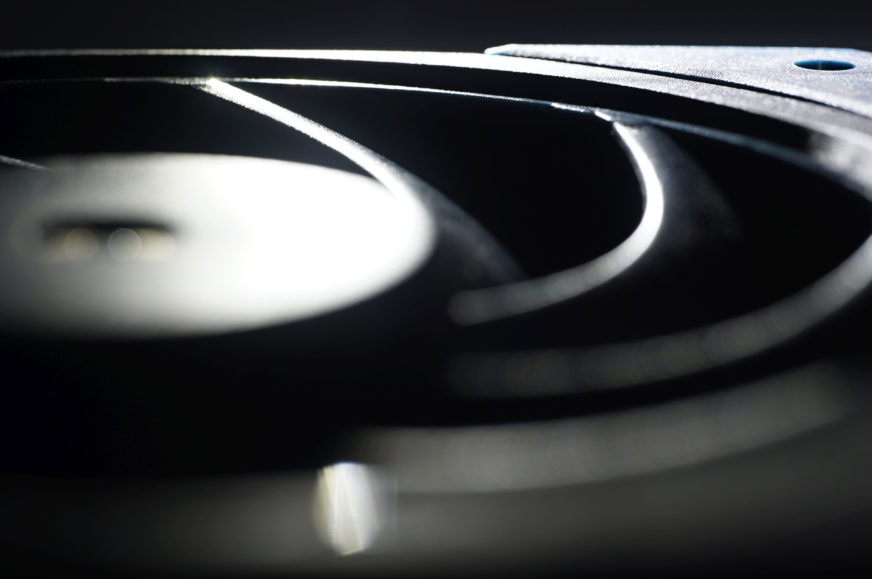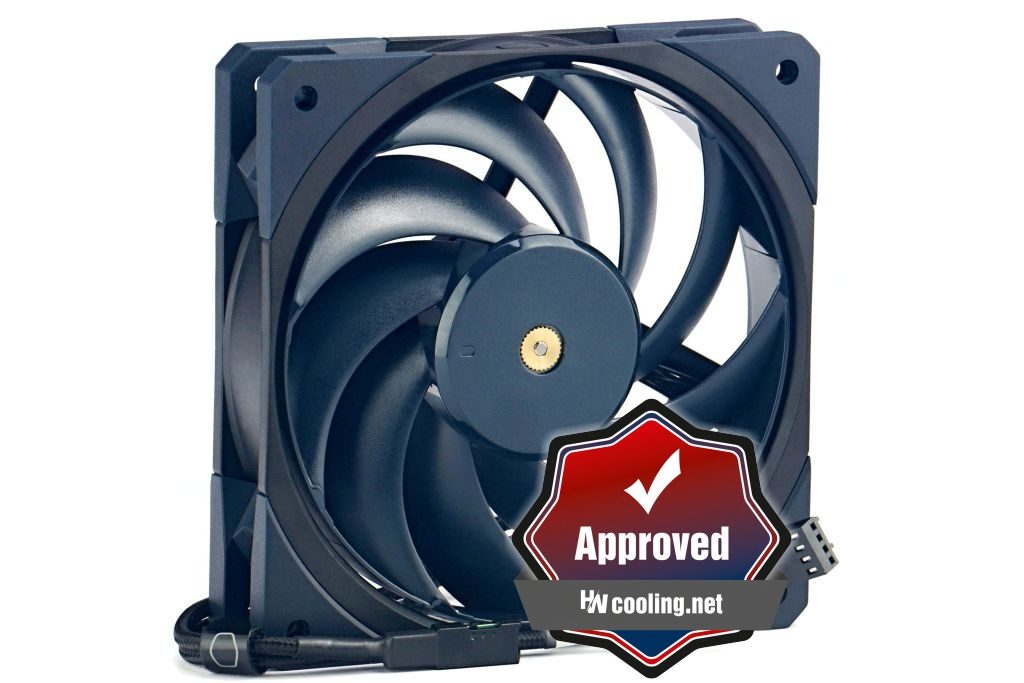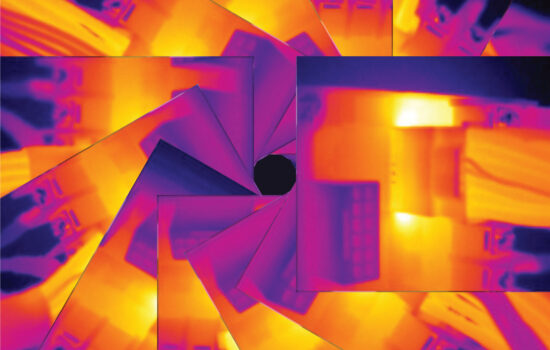Evaluation
With the Mobius 120 OC fan, Cooler Master could prove that it has worked on and avoided the rookie mistakes of older models. Partly yes, it removed some flaws, but it added (or strengthened) others in the process. Still, the current most expensive 120 mm CM fan has one ace up its sleeve, for which it will be extremely attractive in some use cases. Again, though, this is… how to put it… a somewhat “peculiar” execution.
Evaluation
The main weapon of the Mobius 120 OC fan that beats the competition is the really enormous airflow. At maximum speed, not even the BeQuiet! Silent Wings Pro 4 in high-speed mode can keep up with the Cooler Master fan. Yet the Mobius 120 OC doesn’t lag behind on obstacles either, as it has, in addition to high airflow, high static pressure However, this primacy is always bought by the highest noise level. So regardless of the use case, this is both the most powerful and the noisiest 120mm fan we’ve tested to date.
The motor power of the Mobius 120 OC is actually over 10 W, but the operating power draw is naturally significantly lower – at maximum speed approximately one-third. At approximately 3.18 W, it is slightly (6%) lower than the Silent Wings Pro 4. This means that the Mobius 120 OC is more power efficient compared to these two fans. This also applies to lower speeds. The difference is quite abysmal (the ratio of airflow per unit of power draw is twice as high/more favourable in some places with the CM fan). But this exhausts almost all the reasons why it is tempting to reach for the Mobius 120 OC. For someone it may still be the unusual color, but otherwise this fan has nothing else to offer and in each of the aspects under consideration there is already a more attractive option.
The biggest weaknesses of the Mobius 120 OC are the high minimum speeds at PWM control and the higher noise from the motor or bearings. Over PWM the minimum speeds end with the switch on “low” somewhere around 1144 rpm. But it doesn’t matter too much which controller mode you choose as far as the lower speed limit is concerned – the difference is on the order of single units of RPM. According to the parameters, where the speed range starts with a zero value, it would seem that the fan supports a semi-passive mode and switches off at low PWM duty cycle. However, this is not the case and Cooler Master has obviously changed the metric of stating the speed range in this regard. For the MasterFan SF120M, we measured the quoted lower limit to a hair’s breadth, though it is true that the specs do not promise anywhere that you can get to zero via PWM control.
However, like any fan, you can set the DC control to a certain voltage (in this case about 2.2 V). To slow the fan down to lower noise levels we naturally had to reach for linear control, because the lowest speeds achieved by PWM are already too much even for the “39 dBA” mode without obstacles.
As aerodynamic noise is reduced (by lower speed with DC control), non-aerodynamic noises start to stand out more and more. Though it’s not the particularly unpleasant rattling (as with the SickleFlow 120 ARGB), the operation of the SF120M is cleaner.
In the Mobius 120 OC spectrographs, you may notice a peak at 1108 Hz. However, this is low enough to allow the fan to be slowed down to even the quietest “31 dBA” mode. But this is where very weak, uncompetitive results are achieved, because the motor component makes up too large a part of the overall noise and thus takes away space from the speed settings. In other words, if the sound of the fan running was only aerodynamic noise, it would be possible to set a higher speed and naturally achieve a higher airflow with it.
From about 1250 rpm upwards, the Mobius 120 OC fan is accompanied by higher vibrations, which are already quite high at maximum speed. Because of the blade framing, which reduces vibration, it is likely that some of the vibration may be from a source other than the tips of the typically flexible blades. However, the rotor balance and build quality looks very good, precise. But exactly how it is mounted, how accurate the bearings are, remains a question. However, judging by the higher sound frequencies of these elements, it’s obvious that the Mobius 120 OC will be worse off than the significantly quieter MasterFan SF120M in the same spots, the vibrations of which also have a significantly lower intensity.
The Mobius 120’s torque ripple will be minimal, and based on the frequency response of the sound with faint peaks in the aerodynamic band, it can be said that the direct rotor framing works really well, which is why it’s so popular. However, considering the high-end price, the Mobius 120 OC is again a somewhat controversial fan. That is, exactly according to the “style” that Cooler Master seemingly specializes in.
English translation and edit by Jozef Dudáš
| Cooler Master Mobius 120 OC |
| + Suitable for every use case |
| + Extremely high airflow at maximum speed |
| + High airflow and static pressure even through obstacles |
| + Three-stage switch for speed range control |
| + Extremely powerful motor (almost 10 W)... |
| + ... and top-notch power efficiency or high airflow per watt |
| + Aerodynamic sound frequencies are nicely balanced, with no tonal peaks |
| + Wide speed range in DC control |
| - High minimum speed (from approx. 1144 rpm) |
| - Weaker price/performance ratio with respect to quieter operation |
| - Noisier motor/bearings |
| - Higher to high vibration at higher speeds... |
| - ... and the anti-vibration corners are ineffective due to being too hard |
| - Collides with nylon dust filter |
| - Does not support passive mode, does not "turn off" at low PWM duty cycle |
| Approximate retail price: 32 EUR |
- Contents
- Cooler Master Mobius 120 OC in detail
- Overview of manufacturer specifications
- Basis of the methodology, the wind tunnel
- Mounting and vibration measurement
- Initial warm-up and speed recording
- Base 6 equal noise levels…
- ... and sound color (frequency characteristic)
- Static pressure measurement…
- … and airflow
- Everything changes with obstacles
- How we measure power draw and motor power
- Measuring the intensity (and power draw) of lighting
- Results: Speed
- Results: Airlow w/o obstacles
- Results: Airflow through a nylon filter
- Results: Airflow through a plastic filter
- Results: Airflow through a hexagonal grille
- Results: Airflow through a thinner radiator
- Results: Airflow through a thicker radiator
- Results: Static pressure w/o obstacles
- Results: Static pressure through a nylon filter
- Results: Static pressure through a plastic filter
- Results: Static pressure through a hexagonal grille
- Results: Static pressure through a thinner radiator
- Results: Static pressure through a thicker radiator
- Results: Static pressure, efficiency by orientation
- Reality vs. specifications
- Results: Frequency response of sound w/o obstacles
- Results: Frequency response of sound with a dust filter
- Results: Frequency response of sound with a hexagonal grill
- Results: Frequency response of sound with a radiator
- Results: Vibration, in total (3D vector length)
- Results: Vibration, X-axis
- Results: Vibration, Y-axis
- Results: Vibration, Z-axis
- Results: Power draw (and motor power)
- Results: Cooling performance per watt, airflow
- Results: Cooling performance per watt, static pressure
- Airflow per euro
- Static pressure per euro
- Results: Lighting – LED luminance and power draw
- Results: LED to motor power draw ratio
- Evaluation













I found your website in the course of my accidental search, the evaluation is detailed and respectful, I have a certain demand for RGB now, and Cooler Master said that the performance of mobius 140 ARGB is very powerful, there are too few evaluations now, I hope you can give it a look Make a review, many thanks.
We will gradually test all available fans. Only those that will stop selling over time will be unlucky (or lucky, depending on your point of view…).
We are excited to have a new reader. We welcome you dearly. 🙂
For the price, there are unfortunately too many flaws. The only application where the fan is strong is running at full speed disregarding noise, and even at that niche, the 12 cm Silent Wings Pro 4 is very close (and I would expect extremely tough competition from Phanteks T30 and Lian Li P28 as well). The poor PWM implementation on a modern fan is also very puzzling to me, especially at that price point.
The fan could be interesting server-grade solution. Maybe next time, I mean with ultra-long-life bearings and without vibrations.
I also tested Mobius 120 OC on thinner radiator recently, I can say this fan is one of the worst choice at its price.
There are many products on the market that obviously surpass Mobius 120 OC.
In terms of maximum airflow and price, Sanyo Denki 9G1212P4H06-4P, Thermalright TL-B12 EXTREM, Arctic P12 Max can perfectly replace Mobius 120 OC.
In terms of noise-airflow efficiency, PH-F120T30, NF-A12X25 and SW Pro 4 definitely outperform it.
Unlike Mobius 120(P), Mobius 120 OC seems difficult to survive the competition.
Thanks for the cross-verification of the results. 🙂
Actually I doubted my result of Mobius 120 OC because it showed 20%p lower noise-airflow efficiency than PH-F120T30, which was unbelievably poor result for an expensive fan. Now the cross-validation is possible with your thinner radiator test, and the two results are showing similar tendency about the fan. Thanks a lot!
I would LOVE to see you review the regular (non OC) Mobius fans. Particularly the 120p RGB version. It would be interesting to see just how close or far away from the OC performance they are.
Thanks for the tip. As long as the Mobius 120P RGB doesn’t stop selling before we can get our hands on it, we’ll be sure to include it in our tests. Gradually all fans available in the shops will be put in a confrontation. 😉